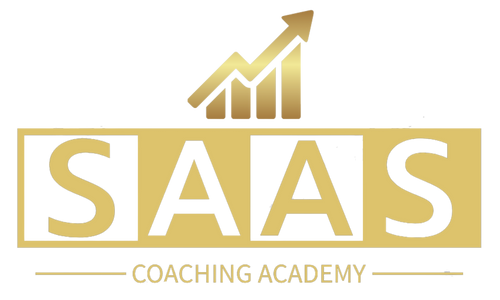Exciting Insights and Tips on Digital Marketing, Sales, Hustle Life, Customer Service, and Upcoming AI

Creating Effective Sell Sheets: A Guide to Achieving Results
The Power of Sell Sheets in Marketing
Sell sheets are a powerful tool in marketing that can effectively showcase the value and benefits of a product or service. As a concise one-pager, they provide a snapshot of what a brand has to offer, making them an essential component of any marketing strategy.
In today's fast-paced world, where attention spans are shorter than ever, it is crucial to make a strong first impression. Sell sheets serve as a physical representation of a brand's identity and purpose, capturing the essence of what sets it apart from competitors. They are often the first point of contact between a potential customer and a brand, making it vital to create a sell sheet that is visually appealing, informative, and memorable.
A well-designed sell sheet can instantly grab the attention of prospects and convey the key features and benefits of a product or service. It acts as a visual elevator pitch, presenting information in a concise and compelling manner. By showcasing the most important aspects of a brand, sell sheets can pique the interest of potential customers and entice them to learn more.
Moreover, sell sheets provide a tangible representation of a brand's credibility. When designed professionally and thoughtfully, they can establish trust and credibility in the eyes of potential customers. By including key design elements such as the company logo and product name, sell sheets create a cohesive and recognizable brand image.
In summary, sell sheets are a crucial marketing tool that can make a lasting impact on potential customers. They serve as a concise and visually appealing representation of a brand's identity and purpose, capturing the attention of prospects and establishing credibility. In the following sections, we will explore the key design elements, the importance of data visualization, the role of a clear call-to-action, and the importance of tailoring the sell sheet to highlight the best parts of the product or service.

Key Design Elements for Effective Sell Sheets
When creating a sell sheet, it is essential to include key design elements that will capture the attention of potential customers and effectively communicate the value of your product or service. These design elements serve as the visual foundation of your sell sheet and play a crucial role in making a lasting impression. Here are some key design elements that should be incorporated into your sell sheet:
1. Company Logo and Product Name: The company logo and product name should be prominently displayed at the top of the sell sheet. This helps establish brand recognition and ensures that your product or service is easily identifiable.
2. Full-Color Visuals: Visuals are a powerful tool in capturing the attention of your audience. Including high-quality, full-color images or illustrations that showcase your product or service can help create a strong visual impact and make your sell sheet more engaging.
3. Attention-Grabbing Headline: A compelling headline is crucial in grabbing the reader's attention and enticing them to learn more about your product or service. It should be concise, impactful, and highlight the key benefit or unique selling proposition of your offering.
4. Introductory Paragraph: The introductory paragraph serves as an opportunity to establish credibility and build trust with your audience. It should provide a brief overview of your company, highlighting key achievements, awards, or industry recognition that demonstrate your expertise and reliability.
5. Product Specifications and Benefits Supported by Hard Data: To convince potential customers of the value of your product or service, it is important to provide specific details about its features, specifications, and benefits. Including hard data, such as statistics, research findings, or testimonials, can help support your claims and make your sell sheet more persuasive.
By incorporating these key design elements into your sell sheet, you can create a visually appealing and informative document that effectively communicates the essence of your brand and the value of your product or service. Remember, a well-designed sell sheet can make a significant impact on your sales efforts and help you stand out from the competition.

Appealing data visualization is important in a sell sheet to present hard data in a digestible and visually appealing manner.
When creating a sell sheet, it is crucial to include hard data that supports the product or service being offered. However, presenting this data in a way that is easily understood and visually appealing can greatly enhance the effectiveness of the sell sheet.
One way to achieve this is through the use of data visualization. Data visualization is the graphical representation of information and data. It allows viewers to quickly grasp complex information and patterns, making it an ideal tool for presenting hard data in a sell sheet.
There are various types of data visualization that can be used in a sell sheet, depending on the type of data being presented. Bar charts, line graphs, pie charts, and infographics are just a few examples of visual elements that can be used to present data in a clear and engaging manner.
When incorporating data visualization into a sell sheet, it is important to keep a few key principles in mind. Firstly, simplicity is key. The visual representation should be easy to understand at a glance, without overwhelming the viewer with too much information. Use clear and concise labels and avoid cluttering the design.
Secondly, choose colors and fonts that are visually appealing and consistent with the overall branding of the product or service. This will help create a cohesive and professional look for the sell sheet.
Lastly, consider the target audience when designing the data visualization. Different demographics may respond better to different types of visual representations. For example, younger audiences may prefer more modern and interactive infographics, while older audiences may prefer traditional charts and graphs.
By incorporating appealing data visualization into a sell sheet, businesses can effectively communicate the value and benefits of their product or service. This visual representation of hard data not only enhances the overall design of the sell sheet but also helps to build credibility and trust with potential customers.

A clear call-to-action is crucial in a sell sheet to guide prospects on the next steps to take after being convinced by the pitch.
Once you have successfully captured the attention of your prospects and convinced them of the value your product or service can offer, it is important to provide them with a clear call-to-action. A call-to-action is a prompt that tells the reader what action they should take next. Without a clear call-to-action, your sell sheet may not achieve its intended purpose of driving prospects towards making a purchase or taking the desired action.
The call-to-action should be concise, direct, and easy to understand. It should clearly communicate what the next steps are and how the prospect can take them. For example, if you want the reader to visit your website to learn more or make a purchase, include a prominent button or link that directs them to the relevant page. If you want them to contact your sales team for further information or to schedule a demo, provide clear contact details and encourage them to reach out.
In addition to providing a clear call-to-action, it is also important to create a sense of urgency or incentive to encourage immediate action. This can be done by offering limited-time discounts or promotions, highlighting the benefits of acting quickly, or emphasizing the potential consequences of not taking action.
Remember to make the call-to-action stand out visually. Use contrasting colors, bold fonts, or other design elements to draw attention to it. The call-to-action should be easily identifiable and distinguishable from the rest of the content on the sell sheet.
Ultimately, the call-to-action is the final push that encourages prospects to take the desired action. By providing a clear and compelling call-to-action, you increase the likelihood of converting prospects into customers and achieving your sales goals.
In conclusion, a clear call-to-action is a crucial element in a sell sheet. It guides prospects on the next steps to take after being convinced by the pitch and encourages them to take action. By providing a concise and direct call-to-action, creating a sense of urgency or incentive, and making it visually prominent, you can maximize the effectiveness of your sell sheet and drive prospects towards making a purchase or taking the desired action.

Tailoring Your Sell Sheet for Maximum Impact
When it comes to designing a sell sheet, there is no one-size-fits-all template. Each product or service has its unique selling points and features that need to be highlighted. This is why it is crucial to tailor your sell sheet to showcase the best parts of your offering.
Creativity plays a significant role in designing an eye-catching sell sheet. Think outside the box and consider unique ways to present your product or service. Use colors, fonts, and graphics that align with your brand's identity and purpose. A visually appealing sell sheet will capture the attention of potential customers and leave a lasting impression.
Attention to detail is also essential in creating an effective sell sheet. Ensure that all the necessary information is included, such as product specifications, benefits, and hard data. Use concise and compelling language to convey the value of your offering. Avoid cluttering the sell sheet with excessive text or overwhelming visuals. Remember, simplicity is key.
Consider the target audience when designing your sell sheet. What would resonate with them? What information would they find most valuable? By understanding your audience's needs and preferences, you can tailor your sell sheet to address their specific pain points and showcase how your product or service can solve their problems.
Another important aspect to consider is the overall layout and organization of your sell sheet. Make sure the information flows logically and is easy to digest. Use headings, subheadings, and bullet points to break up the content and make it more scannable. A well-structured sell sheet will allow potential customers to quickly grasp the key benefits and features of your offering.
Lastly, don't forget to include your contact information and a clear call-to-action. After capturing the interest of potential customers, you want to guide them on the next steps to take. Whether it's visiting your website, contacting your sales team, or making a purchase, make it easy for prospects to take action.
In conclusion, while there is no strict template for sell sheet design, tailoring your sell sheet to highlight the best parts of your product or service is crucial. Be creative, pay attention to detail, and consider your target audience. By doing so, you can create an eye-catching and informative sell sheet that effectively communicates the value of your offering and drives action.



© 2025 SaaS Coaching Academy | All Rights Reserved | All Sales Are Final No Refunds | Privacy Policy | Terms of Service | Contact Us
info@leadstoroi.com
541-270-3477

